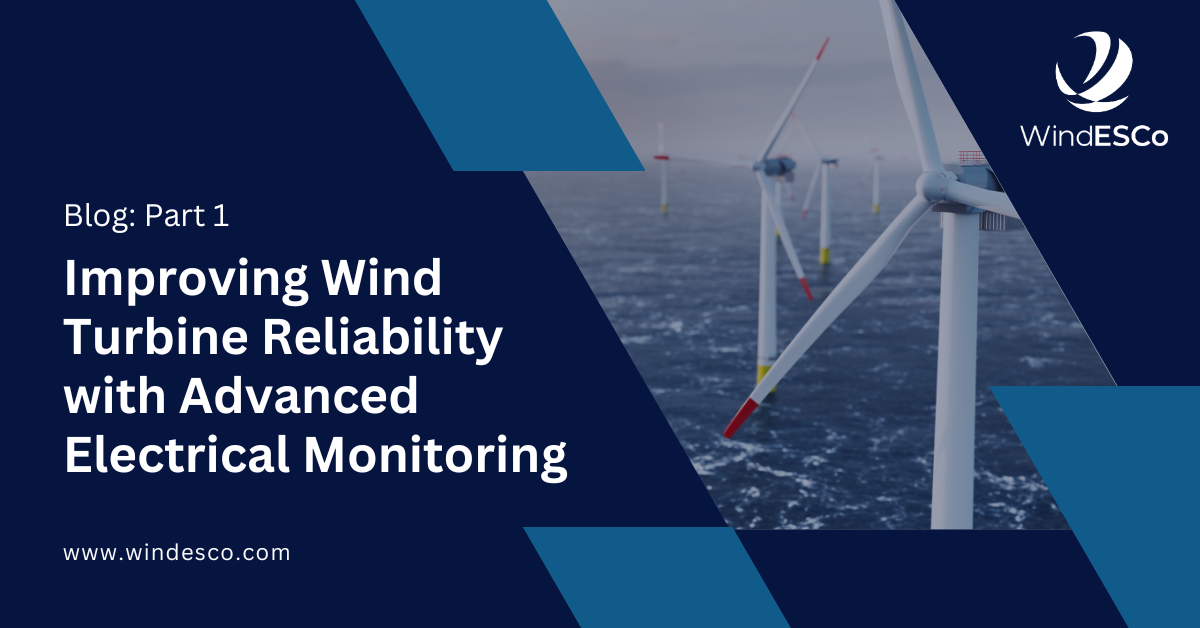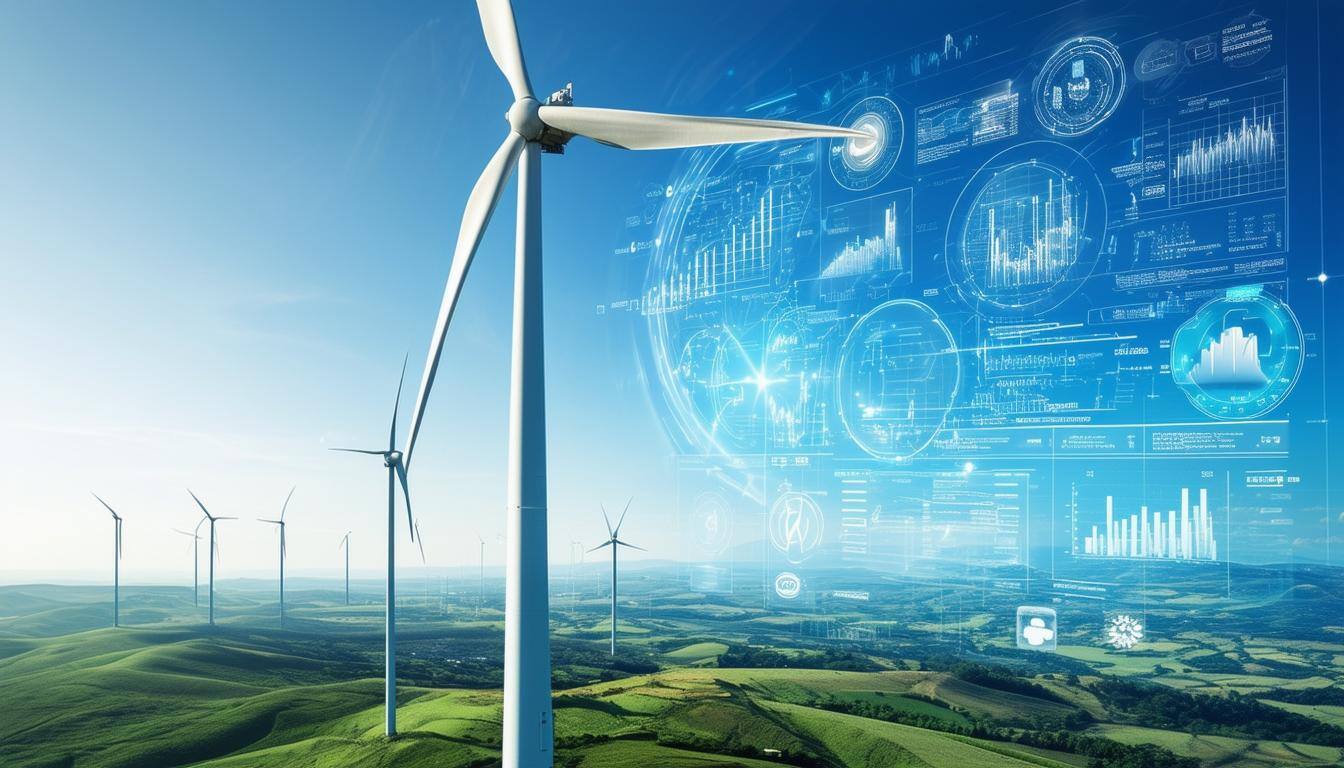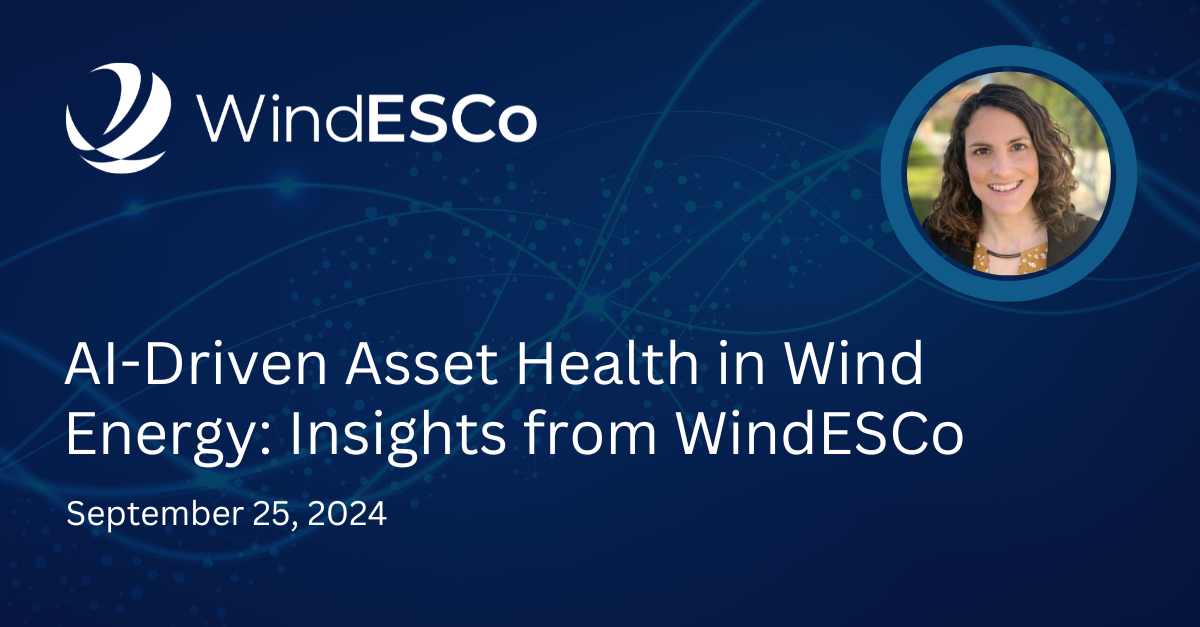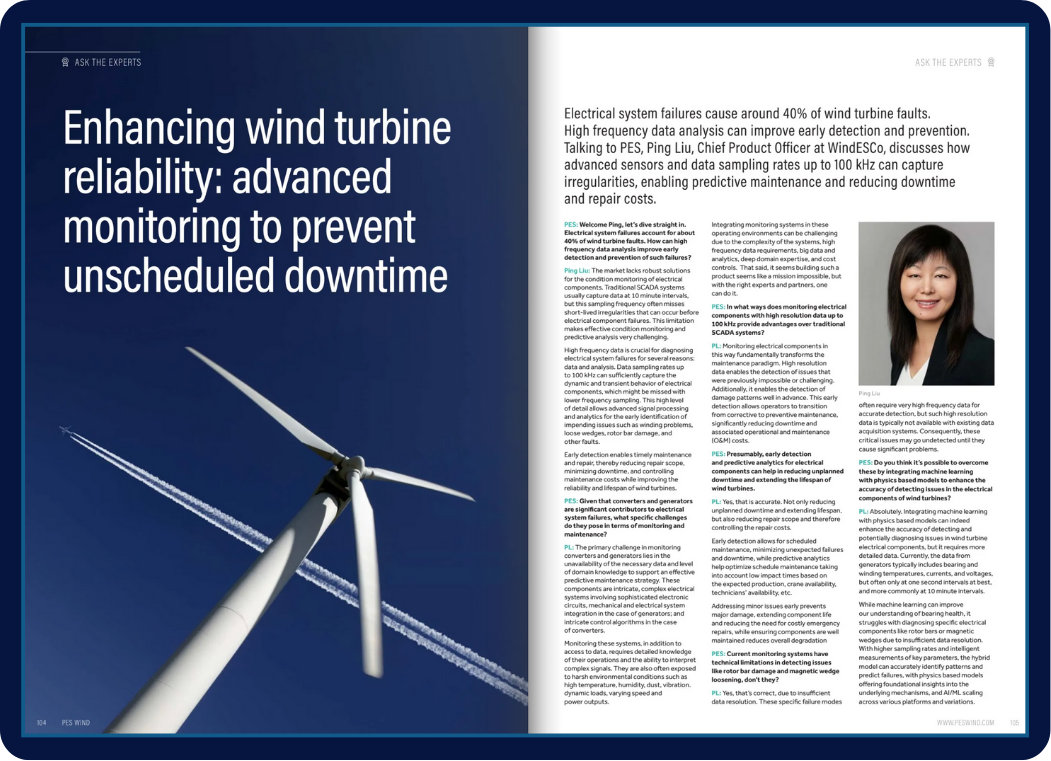In the first part of our two-part series, we explore the critical gap in electrical system visibility and how advanced monitoring solutions are revolutionizing turbine management. We’ll dive into the challenges of converter health monitoring, the innovative approach taken by WindESCo and ABB, and how we're paving the way for a more proactive, data-driven approach to turbine maintenance.
The reliability of wind turbines is a cornerstone of stable and efficient energy production. The performance and longevity of these turbines are heavily reliant on the health of their electrical and mechanical systems. However, a significant visibility gap persists, particularly in monitoring electrical components, which account for 20% to 45% of turbine downtime. These systems remain a “black box,” limiting the ability of operators to proactively address issues.
While modern turbines collect data from various components, detailed, real-time insights into the health of critical electrical systems—especially converters—are severely lacking. This limitation hinders efforts to optimize turbine performance and reduce unplanned downtime. Converters are vital for efficient energy conversion and grid compliance, yet they also represent one of the most challenging areas for wind farm operators. Failures in converter and generator systems account for 50% to 90% of all electrical system failures, highlighting the urgent need for improved monitoring and analysis.
Bridging the Gap: The Path Forward
Reducing unscheduled maintenance and its associated costs is a top priority for wind turbine operators. Yet without advanced visibility into critical components, achieving this goal remains elusive. To address this challenge, WindESCo and ABB—a global leader in motors and system drives—have partnered to develop the Electrical Condition Monitoring System (eCMS). This innovative solution focuses on converters and other electrical subsystems, such as generators, leveraging ABB’s proven technology and expertise in collaboration with WindESCo’s advanced analytics.
Powered by GeneratorSense, eCMS extracts critical electrical measurements using specialized IoT devices, enabling real-time monitoring and early detection of common failure modes. By combining ABB's domain knowledge with WindESCo’s advanced analytics, eCMS provides a paradigm shift in managing converter health, empowering wind operators to move from reactive to predictive maintenance.
Unlocking the Converter Data "Black Box"
Accessing the necessary data is the first step. High-resolution measurements of key converter parameters—such as current, voltage, and temperature—are not available through traditional SCADA systems. To bridge this gap, IoT devices like ConverterSense are deployed to capture critical data directly from the converter. With this data in hand, eCMS applies a combination of advanced analytic techniques to detect the issues:
- Physics-Based Modeling: Simulating the physical behavior of components to predict failure conditions.
- Signal-Based Analysis: Identifying anomalies and trends in electrical signals.
- Data-Driven Machine Learning: Leveraging historical data to train predictive models.
This approach establishes a robust data foundation, enabling operators to take advantage of adv analytics to monitor and address potential issues proactively.
Proactive Maintenance and Failure Mode Detection
WindESCo eCMS transforms turbine maintenance strategies by providing an online monitoring platform that supports predictive and proactive maintenance, O&M schedule optimization, and reduced repair scope. The system detects a wide range of common converter failure modes, including:
- IGBT Failures: IGBT is critical for switching and controlling power, and they can fail due to thermal cycling, over-voltage, over-current, or environmental factors.
- Capacitor Failures: AC and DC capacitor issues due to wear and environmental stress.
- Cooling System Failures: Challenges in air-cooled, liquid-cooled, or hybrid cooling systems.
- Thermal Events: Overheating or temperature fluctuations impacting system reliability.
- Other Electrical Components: Including semiconductors and main circuit breakers.
By addressing these failure modes early, eCMS minimizes downtime, streamlines repairs, and ensures reliable energy production.
Driving the Future of Wind Energy Operations
Through the combined expertise of WindESCo and ABB, the eCMS solution demystifies the converter health monitoring, transforming it from a “black box” into a well-monitored, manageable system. This shift enables operators to reduce unexpected costs, optimize logistics, and elevate turbine reliability, ultimately contributing to a more sustainable and cost-effective wind energy future.
In part 2 of this blog series, we'll explore eCMS further and dive deeper into the common failure modes detected and some notable cases - stay tuned!
For more on the eCMS, check out our latest webinar or contact our team!






